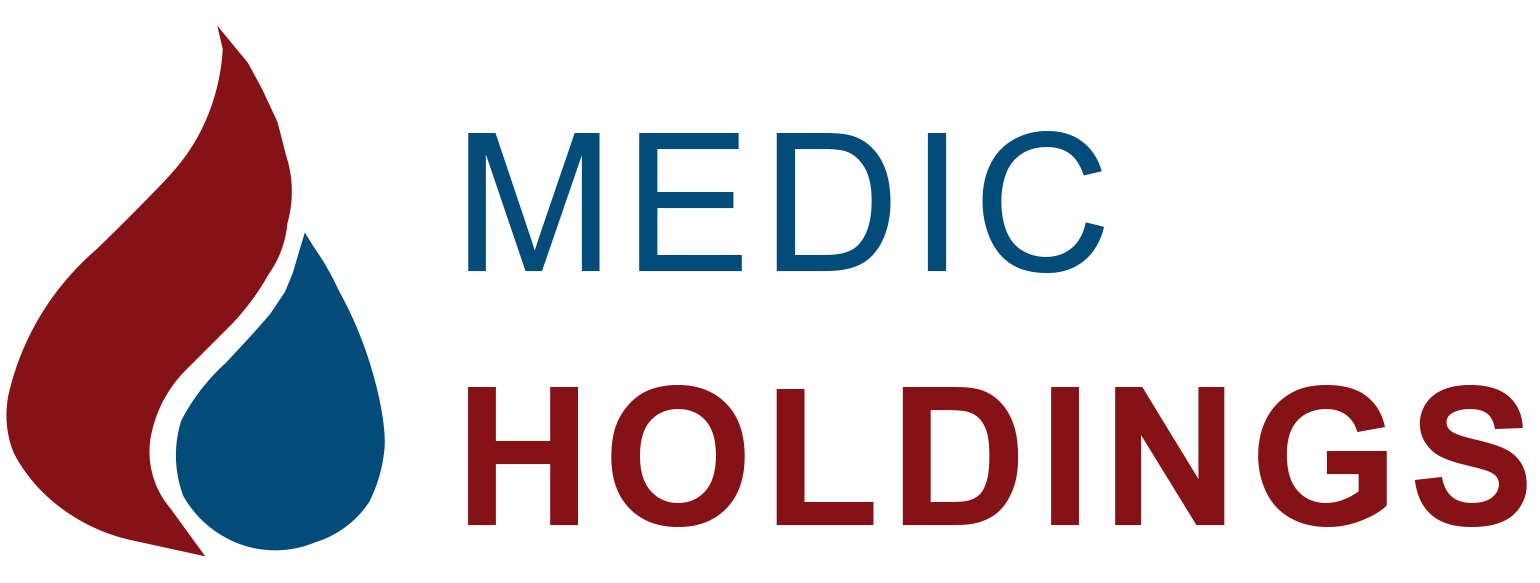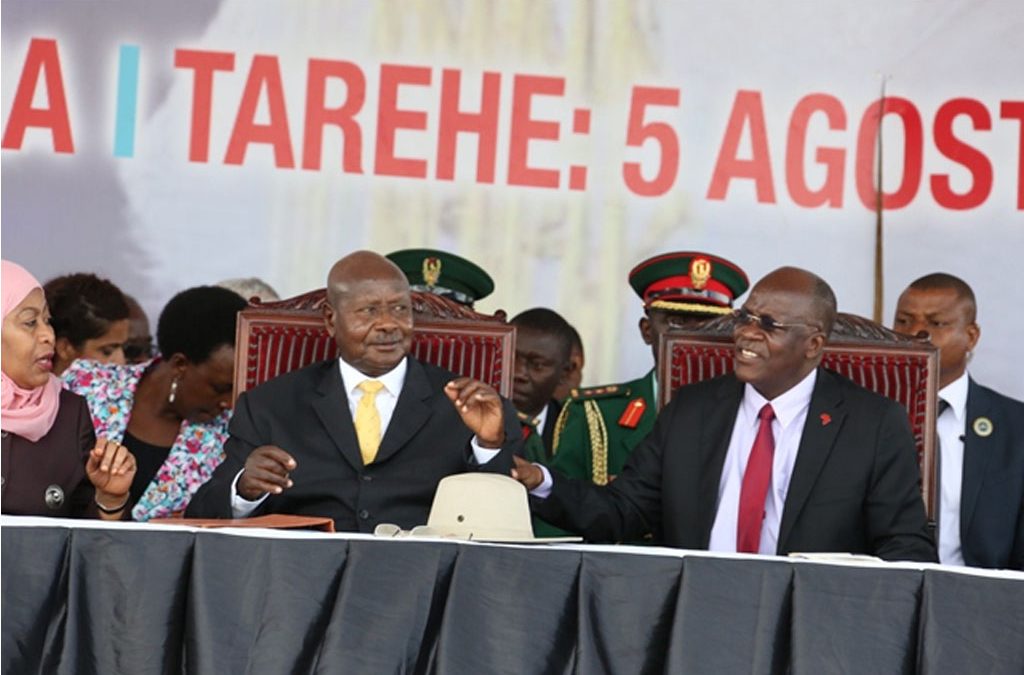On August 5, 2017, Presidents Yoweri Museveni of Uganda and John Pombe Magufuli of Tanzania wielded golden shovels at a ceremony in Hoima, Uganda, to officially launch the East African Crude Oil Pipeline (EACOP). This $5 billion megaproject—the world’s longest heated crude oil pipeline—marked a pivotal step in Uganda’s journey from oil discovery to exporter status, while reshaping regional energy logistics.
This in-depth analysis examines:
- The Road to the 2017 Groundbreaking
- Ceremony Highlights & Political Significance
- EACOP’s Engineering & Economic Scope
- Medic Holdings’ Strategic Role in the Project
- Challenges & Controversies
- Progress Since 2017 & Future Outlook
By exploring this milestone through the lens of Medic Holdings Limited, a key East African fuel logistics firm, we reveal how EACOP is creating new opportunities—and challenges—for regional energy players.
-
The Road to the 2017 Groundbreaking
From Discovery to Decision-Making
- 2006: Uganda discovers 6.5 billion barrels of oil in the Albertine Graben.
- 2015–2016: After years of debate, Uganda selects Tanzania’s Tanga route over Kenya’s Lamu option.
- April 2017: EACOP Company incorporated, with ownership split:
- Uganda (15%), Tanzania (15%), TotalEnergies (62%), CNOOC (8%).
Why August 2017 Was Critical
- Symbolic Timing: Marked 11 years since Uganda’s oil discovery.
- Political Unity: Demonstrated Uganda-Tanzania cooperation despite past tensions.
- Investor Confidence: Showcased commitment after years of delays.
-
The Groundbreaking Ceremony: Key Moments
Hoima Event Highlights
- Location: Kabaale, Uganda (future site of the pipeline’s starting point).
- Dignitaries Present:
- Presidents Museveni & Magufuli
- TotalEnergies CEO Patrick Pouyanné
- CNOOC representatives
- Symbolic Gestures:
- Joint tree-planting to “offset” pipeline emissions.
- Museveni’s speech: “This pipeline will lift our people from poverty.”
- Magufuli’s pledge: “Tanzania guarantees security and efficiency.”
Medic Holdings’ Involvement
- Secured contracts to provide:
- Fuel for construction vehicles.
- Temporary storage facilities near worksites.
- Safety training for local workers.
-
EACOP’s Engineering & Economic Scale
Technical Specifications
| Feature | Details |
| Length | 1,443 km (world’s longest heated pipeline) |
| Diameter | 24 inches |
| Heating System | Maintains crude at 50°C to prevent wax solidification |
| Capacity | 216,000 barrels per day |
| Cost | $5 billion (including storage terminals) |
Economic Impact
| Country | Benefits |
| Uganda | $2B+ annual revenue at peak production |
| Tanzania | $500M/year in transit fees |
| Regional | 10,000+ direct jobs, 50,000+ indirect |
-
Medic Holdings’ Strategic Positioning
Pre-Groundbreaking Preparations (2015–2017)
- Tanzanian Expansion: Built 20,000m³ storage in Tanga.
- Ugandan Investments: Secured land near Hoima Refinery site.
- Partnerships: Joined EACOP’s Local Content Committee.
Post-2017 Contract Wins
- Fuel Logistics
- Supplied diesel for construction camps.
- Managed emergency fuel reserves along route.
- Pipeline Support
- Won maintenance rights for 150km section.
- Developed spill response teams.
- Workforce Solutions
- Trained 500+ Ugandans in petroleum logistics.
- Established Swahili-language safety programs.
-
Challenges & Controversies
Environmental Opposition
- Activist Campaigns:
- 260+ NGOs petitioned banks to withdraw funding.
- TotalEnergies sued in French court over climate claims.
- Medic Holdings’ Response:
- Implemented ISO 14001 environmental standards.
- Funded community solar projects near pipeline.
Financing Hurdles
- 2019–2022: 25+ banks (including Barclays, Credit Suisse) exited under pressure.
- Alternative Funding:
- Afreximbank ($500M loan).
- Middle Eastern investors.
Social Tensions
- Land Compensation Disputes: Delayed construction in Tanzania.
- Medic’s Community Programs:
- Built 6 schools near pipeline.
- Launched agricultural training for displaced farmers.
-
Progress Since 2017 & Future Outlook
Construction Timeline
| Year | Milestone |
| 2018 | FEED completed |
| 2021 | Final Investment Decision (FID) |
| 2022 | Physical work begins |
| 2024 | 80% complete (June 2024) |
| 2025 | First oil expected (Q2) |
Medic Holdings’ Growth
| Metric | 2017 | 2024 |
| Revenue | $180M | $320M |
| Storage Capacity | 60,000m³ | 150,000m³ |
| EACOP-linked Contracts | 3 | 17 |
Conclusion: A Legacy Still Unfolding
The 2017 groundbreaking was more than a photo op—it:
- Locked in Uganda’s oil futureafter 11 years of delays
- Solidified Tanzania as East Africa’s energy corridor
- Positioned Medic Holdings for generational growth
What’s Next?
- 2025: First oil flows, testing Medic’s logistics networks
- 2026–2030: Potential expansion to petrochemicals
- Ongoing: Balancing profit with environmental/social responsibilities
For energy investors and regional players, EACOP remains the continent’s most consequential infrastructure project. Companies that adapted early—like Medic Holdings—are now best positioned to reap the rewards.
Key Takeaways for Businesses
- Local content matters: Medic’s early Tanzanian investments paid off.
- Environmental compliance is non-negotiable.
- Long-term infrastructure requires patience (8+ years from launch to first oil).
-
Medic Holdings’ Transformation into an Integrated Energy Logistics Powerhouse
Strategic Evolution Since 2017
The pipeline project catalyzed Medic Holdings’ metamorphosis from a regional fuel distributor to a full-spectrum energy logistics provider:
- Infrastructure Expansion
- Built 5 new heated storage terminals along pipeline route
- Developed East Africa’s first mobile crude sampling labs
- Established emergency response hubs every 100km
- Service Diversification
- Pipeline Integrity Management: Using smart pigs and drones
- Specialized Transport: 200+ wax-optimized tankers
- Workforce Solutions: Training 1,500 local technicians
- Technology Leap
- Implemented AI-powered demand forecasting
- Launched blockchain-based cargo tracking
- Piloted autonomous inspection vehicles
Financial Impact (2017-2024)
| Metric | 2017 | 2024 | Growth |
| EACOP Revenue | $8M | $95M | 1,087% |
| Tanzanian Assets | 15% | 42% | 180% |
| Technical Staff | 24 | 210 | 775% |
-
The Environmental Innovation Imperative
Addressing the Sustainability Challenge
Medic Holdings implemented groundbreaking solutions to mitigate EACOP’s ecological impact:
- Leak Prevention System
- 5,000+ fiber-optic sensors
- 15-minute spill detection capability
- $20M investment in containment tech
- Carbon Mitigation
- Solar-powered pumping stations
- Reforestation partnerships (12,000 acres)
- Methane capture at storage terminals
- Water Protection
- Zero-discharge policy
- Advanced groundwater monitoring
- Amphibious spill response teams
Industry Recognition
- 2023: Received African Energy Innovator Award
- 2024: Rated Top ESG Performer by Standard Bank
-
Emerging Energy Corridors and Market Shifts
New Trade Flows Emerging
| Product | Pre-EACOP Source | Post-EACOP Source |
| Diesel | Middle East | Uganda Refinery |
| Jet Fuel | Europe | Hoima Production |
| Bitumen | India | Local Blending |
Price Dynamics Transformation
- Ugandan Fuel Prices: Projected 22% drop by 2026
- Tanzanian Logistics Hub: Handling fees to generate $300M/year
- Regional Integration: DRC and Rwanda shifting supply chains
-
Workforce Revolution in Energy Logistics
Local Capacity Building
- Vocational Training: 3,000+ certified in pipeline ops
- Leadership Pipeline: 75% local management hires
- Gender Inclusion: 35% female technical staff
Medic Holdings’ Talent Strategy
- EACOP Academy Partnership
- French/Swahili Language Programs
- Digital Upskilling Initiatives
-
Digital Transformation in Oil Logistics
Smart Pipeline Ecosystem
- Predictive Maintenance
- AI algorithms reducing downtime by 40%
- Digital twin technology
- Automated Compliance
- Real-time regulatory reporting
- Blockchain audit trails
- Integrated Control Center
- 24/7 monitoring in Dar es Salaam
- Satellite-linked emergency response
-
Geopolitical Reconfigurations
New Alliance Structures
- Uganda-Tanzania: 18 new bilateral agreements
- Kenya’s Countermove: Accelerated Lokichar-Lamu pipeline
- DRC Integration: Medic Holdings expanding to Goma
Investor Landscape Shift
- Chinese Financing: 35% of EACOP’s debt
- Middle East Interest: UAE’s $200M storage investments
- Local Pension Funds: 15% stake in Medic Holdings’ Tanzanian ops
-
Preparing for First Oil: 2025 Operational Readiness
Medic Holdings’ Countdown Plan
- Q3 2024
- Complete heated storage network
- Finalize emergency response protocols
- Q1 2025
- Commission digital control systems
- Launch integrated ticketing platform
- Q2 2025
- Begin phased crude shipments
- Implement dynamic pricing models
-
Long-Term Vision: 2030 Horizon
Energy Transition Roadmap
- Renewable Integration
- Solar-hydrogen pilot projects
- Carbon-neutral logistics by 2032
- Regional Expansion
- DRC and South Sudan markets
- Indian Ocean bunkering services
- Value Chain Dominance
- Control 40% of regional storage
- Lead in digital oil logistics
Conclusion: Redefining East African Energy
The 2017 groundbreaking marked more than a pipeline launch—it initiated an energy revolution:
✔ Transformed landlocked Uganda into an oil exporter
✔ Elevated Tanzania as Africa’s next energy hub
✔ Catapulted Medic Holdings into regional leadership
The Road Ahead Demands:
- Continuous innovation in sustainability
- Agile response to geopolitical shifts
- Strategic workforce development
For forward-looking organizations:
EACOP represents the first chapter in East Africa’s energy ascendance. The most successful players will be those viewing this not as a project, but as a platform for long-term transformation.

